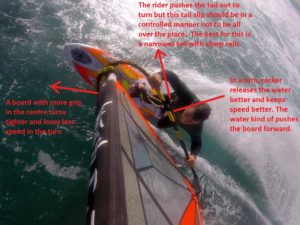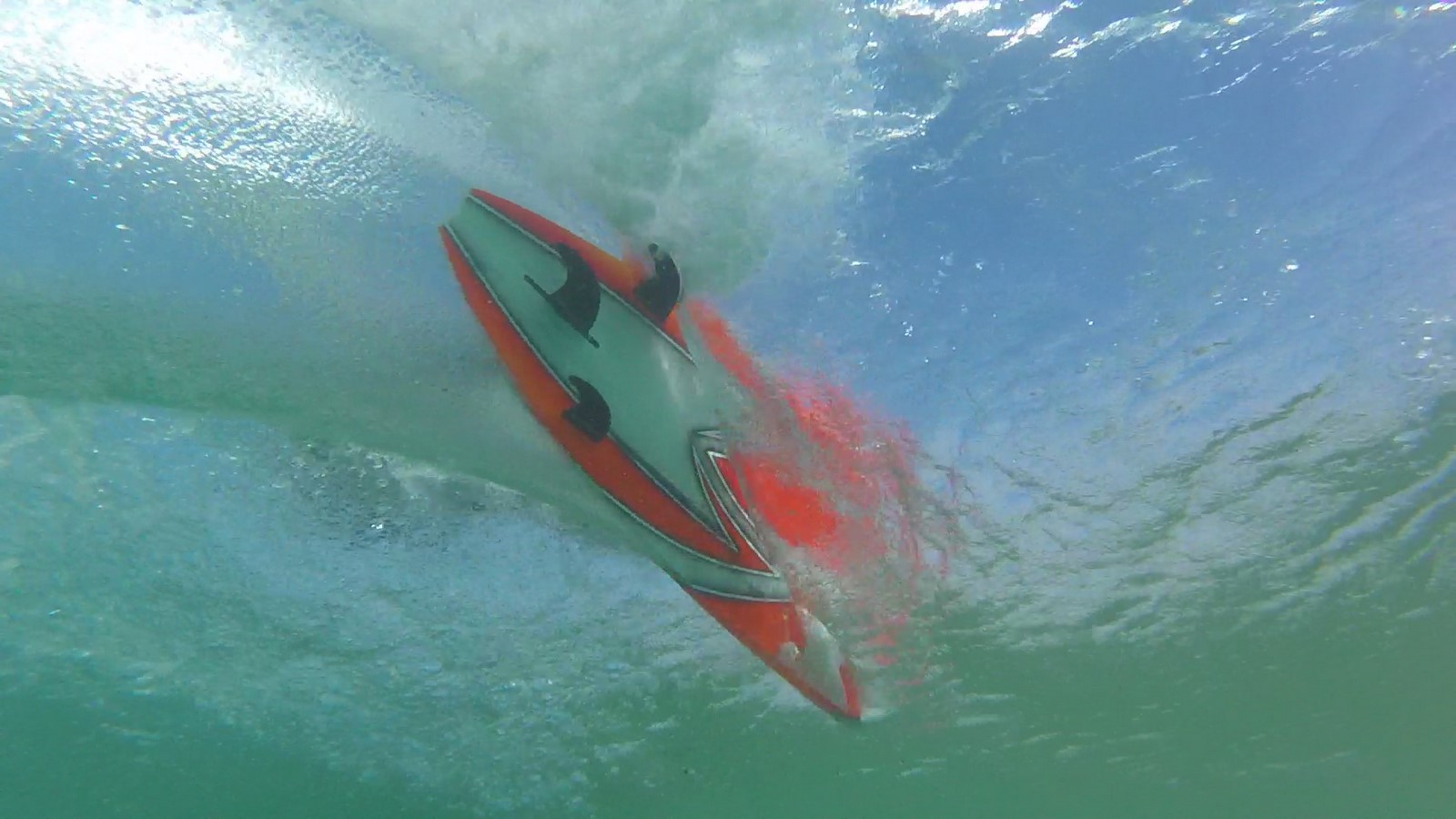
Those Small but Significant Differences P3: Rails and Outline
April 18th, 2020 Posted by Bouke Becker Boards No Comment yetThis time some differences that are not so small and all the more significant.
I often get asked why the rails on Witchcraft boards are quite a bit sharper than other brands. Then I ask why do they make them so round? Nobody really seems know. Maybe it is “because everybody does them like this” or shapers presume: “wave boards should have round rails”. I really don´t know, maybe no other brand has tried this. Like with our pre-twisted fin system. At least I have not seen any other brand try sharper rails and found round rails are better. Maybe it stems from the often very choppy wave @ Hookipa where you often see the riders bounce down the wave and the wave has a lot of forward speed so you do not have to carve as hard back to the wave. There are only a few other spots in the world which are similarly choppy, in Western Australia there are quite a few and a few other unusual spots like K-Bay in the UK. Most of the time this is due to having off shore reefs where the wind chop can run in a 90° angle to the ground swell. It may also be a back wash off the beach or an unusual rip against the wind. Even an high wind on shore spot like Pozo can be surprisingly clean compared to such side shore locations. Maybe it even stems from surf boards which are hand laminated without vacuum and some “clever” board shaper found it is easier to laminate round rails and said “this is better for surfing”.
But is that so? First of all sharp rails plane lots earlier. You simply have a lot more planing area plus a clean release. See below comparison table for the average amounts of “tucked under edge” on boards we have measured. In the centre we have measured up to 22mm of tucked on some boards. So there can even be 12mm difference in tucked, meaning there is 24mm (!!!) less width in the planing area.
Here a few measurements on various boards: from left to right: bow, centre, front strap, fins
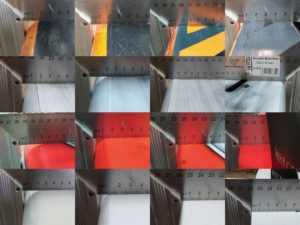
Tucked under edge comparison in mm:

Still when you have the board on the rail in the bottom turn, you feel the whole width which makes it harder to control and keep it on the rail. So with round rails you have a board that either planes less early or that is harder to keep on the rail.
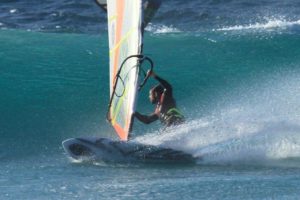
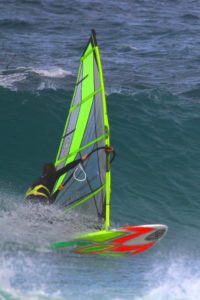
In the front, the rails should be round, here the water has to be guided under the board and a sharp rail would cause more drag. Airplane wings are round in the front too. But from the centre back, we push down a lot harder on the board and even more so with the G-forces in a turn. From here the water wants to escape this pressure so flows outward. Once the water is only flowing outward, there is no need for round rails.
Nowadays high tech CFD simulations are getting very realistic and provide very interesting information for a shaper. It allows a shaper to “see” under the board and get information on the water flow and water pressure under the board. Information that was previously pretty much impossible to obtain. Our CFD simulations also show that in the back half, the water flows outward and the second image shows the pressure distribution which causes a board to turn.
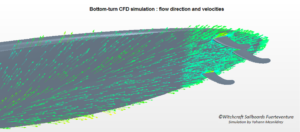
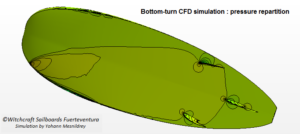
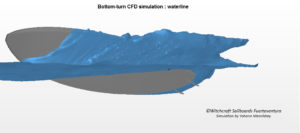
And the clear waters of Fuerteventura also allow for under water filming: 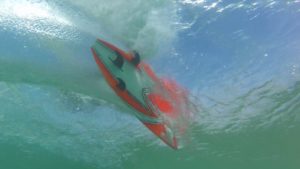
Especially in slow motion you can see a lot more that other wise happens too fast.
Secondly sharp rail also go up wind better so you can get more waves or jumps. A round rail in the back sucks a board down in the water before it releases and stalls sooner when the speed drops.
The Rudder Effect
Then another important effect is for turning, sharp rails in the back half of the board also turn better. When you enter a turn, the taper of the outline works like a rudder. If you draw an imaginary line through the widest point of the planing area (so not of the outline) and the edge of the planing area under the back foot, this line makes an angle with the centre line. So when pushing just a little bit on this rail, the rail “guides” the board in this direction. The bigger the angle of this imaginary line with the boards centre line, the bigger the effect. By weight placement you can also vary the amount of rudder effect, lean more forward and the entry point is more forward leading to a smaller angle with a smaller rudder effect thus less reactive. And by sailing more on the back foot the angle becomes bigger and the board more reactive.
The outline taper is a great tool to tune the character of board for different conditions or types of sailors. I give a board like the Reaper more outline taper to make it more reactive in small waves in spite of its flat rocker line. And the Wave V5 has less because it has more rocker and needs more control in bigger waves. These shape differences are also supported by the foot strap positioning of different shapes.
Here a comparison of the Wave V5, Chakra V3, Reaper against a Stubby:



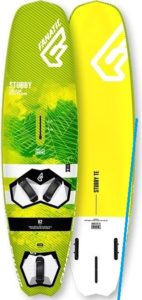
Also the sharper the rail, the bigger the rudder effect. If you do not have grip with the front wheels of a car, you can´t turn. So the bigger the “rudder effect”, the more reactive the board will be. The only down side can be that a board can become too reactive, for example bottom turning when it is choppy. For this reason, easier going shapes board like the Chakra or to be sailed in smaller waves with more chop like the Reaper have a bit rounder rails than the Wave (V3, 4 or 5), which is made for cleaner waves. What you usually see when waves get bigger, the area in front cleans up when the wave takes shape and gets steeper. Even on shore conditions are usually not so choppy when the wind gets stronger and the waves get bigger. When sailing in a straight line, rails do not make a difference in handling chop. Also the lower control in chop can be dealt with by using less rocker for example and have an even bigger wind range.
So both these features help to enter the turn, Then once we have entered the turn, we engage more rail and the rocker takes over the main role for turning. By leaning back or forward you can use more the taper or the rocker to adjust the turn.
Here is Will craking a tight bottom turn:
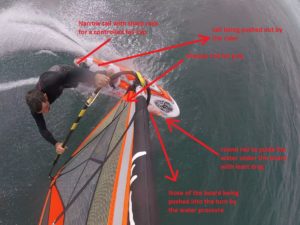
Grip
Grip is king, an F1 car on wet grass would be all over the place. After all, we are sailing on water, not tarmac, ice or sand so high grip is still relative.
When having the board on the rail, a sharp rail also has many benefits: Less rail slip, more grip and drive, more precision. You can sit higher on a steep face, get more speed out of a wave and keep more speed through the turn.
Like the Boards.co.uk test team already wrote in 2007 when testing the Witchcraft Wave : “the rail bites beautifully and accelerates you hard into the wave”.
And www.windsurf.co.uk in 2011: “On the wave it has a versatile carving style and it is able to hold its speed incredibly well through the turns”.
And a high grip is also very usefull when cranking top turns:
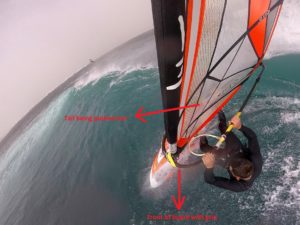
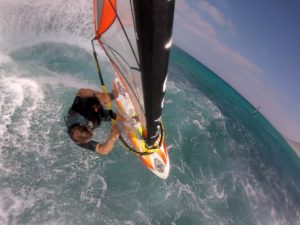
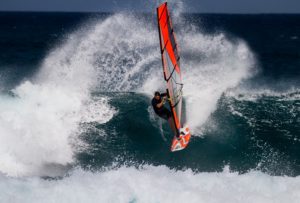
And when you keep the board flat or look for some foam, it is still easy to lose the tail, as Will is demonstrating here with a lip slide and a taka:
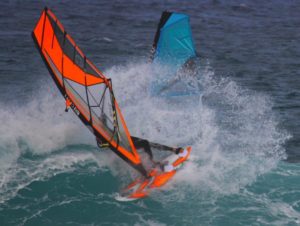
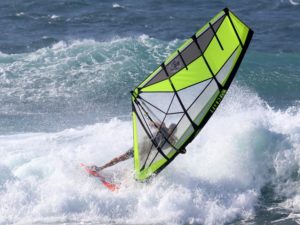
Wind range.
Apart from for turning, having more outline taper also gives a bigger wind range, you can adapt the needed planing area better to the amount of wind power there is. Wider in the front to get planing and the faster you go the more you can reduce the wetted area to have more control and top end speed once planing. Boards with parallel rails miss out on the increased wind range and reactivity of a tapered outline.
